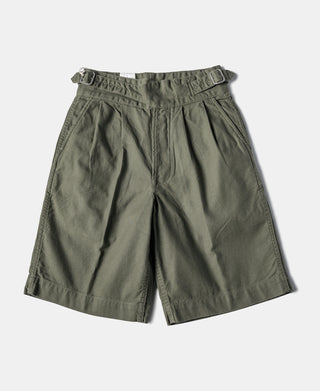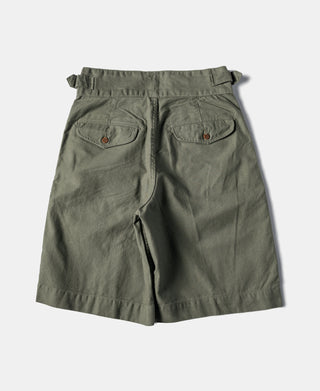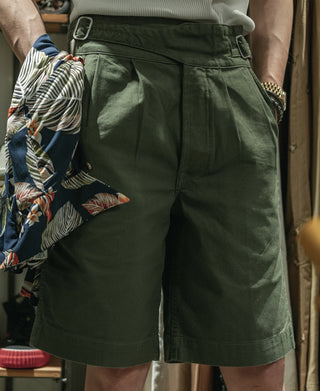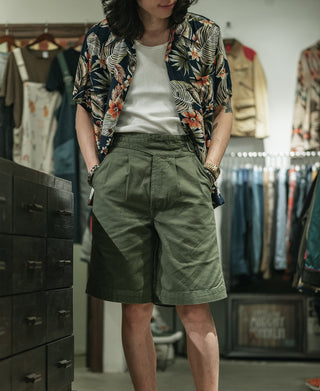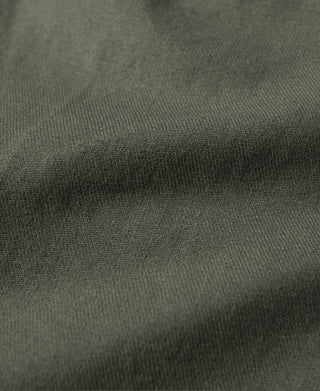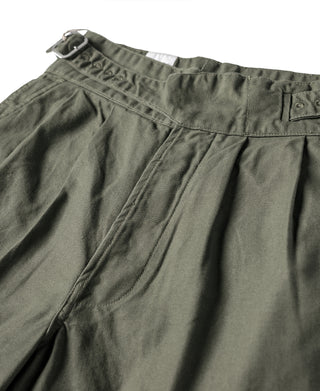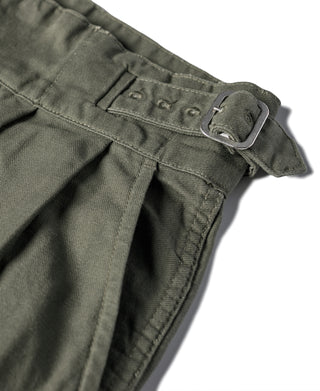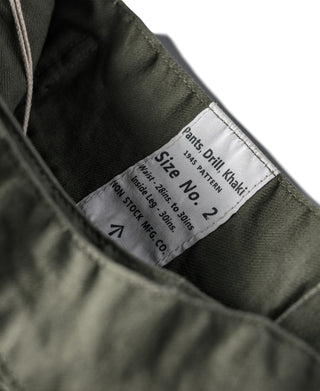
Save 5% on your first order. Click Here
Free Shipping over £79 + 30-day Returns.
Model
Adding product to your cart
The pant is defined by its double-pleated front and high, cummerbund-style waistband with buckle fastenings.
Please carefully read the size info before purchase! Different products have different size info.
Please use this info as a general guide as measurements are approximate.
| Size | Waist | Seat |
| No. 2 | 28.3" / 72 cm | 40.2" / 102 cm |
| No. 4 | 30.3" / 77 cm | 42.5" / 108 cm |
| No. 6 | 32.3" / 82 cm | 44.1" / 112 cm |
| No. 8 | 34.3" / 87 cm | 46.1" / 117 cm |
| No. 10 | 35.8" / 91 cm | 47.2" / 120 cm |
| No. 12 | 37.4" / 95 cm | 48.8" / 124 cm |
| Size | Thigh | Length |
| No. 2 | 26.0" / 66 cm | 22.6" / 57.5 cm |
| No. 4 | 26.8" / 68 cm | 23.2" / 59 cm |
| No. 6 | 28.0" / 71 cm | 23.6" / 60 cm |
| No. 8 | 28.3" / 72 cm | 24.0" / 61 cm |
| No. 10 | 29.1" / 74 cm | 24.6" / 62.5 cm |
| No. 12 | 29.1" / 74 cm | 25.2" / 64 cm |
| Size | Leg Opening |
| No. 2 | 22.0" / 56 cm |
| No. 4 | 22.8" / 58 cm |
| No. 6 | 23.6" / 60 cm |
| No. 8 | 24.4" / 62 cm |
| No. 10 | 25.2" / 64 cm |
| No. 12 | 26.0" / 66 cm |
In order to best determine fit, it may be helpful to compare our garment’s measurements to a similar garment you already own. Lay your garment on a flat surface and take all measurements from the outside of the garment.
Click here to check out our Garment Measuring Guide.
** If you are still confused, you can Contact Us to help you choose the size. **
The pant is defined by its double-pleated front and high, cummerbund-style waistband with buckle fastenings.
Please carefully read the size info before purchase! Different products have different size info.
Please use this info as a general guide as measurements are approximate.
| Size | Waist | Seat |
| No. 2 | 28.3" / 72 cm | 40.2" / 102 cm |
| No. 4 | 30.3" / 77 cm | 42.5" / 108 cm |
| No. 6 | 32.3" / 82 cm | 44.1" / 112 cm |
| No. 8 | 34.3" / 87 cm | 46.1" / 117 cm |
| No. 10 | 35.8" / 91 cm | 47.2" / 120 cm |
| No. 12 | 37.4" / 95 cm | 48.8" / 124 cm |
| Size | Thigh | Length |
| No. 2 | 26.0" / 66 cm | 22.6" / 57.5 cm |
| No. 4 | 26.8" / 68 cm | 23.2" / 59 cm |
| No. 6 | 28.0" / 71 cm | 23.6" / 60 cm |
| No. 8 | 28.3" / 72 cm | 24.0" / 61 cm |
| No. 10 | 29.1" / 74 cm | 24.6" / 62.5 cm |
| No. 12 | 29.1" / 74 cm | 25.2" / 64 cm |
| Size | Leg Opening |
| No. 2 | 22.0" / 56 cm |
| No. 4 | 22.8" / 58 cm |
| No. 6 | 23.6" / 60 cm |
| No. 8 | 24.4" / 62 cm |
| No. 10 | 25.2" / 64 cm |
| No. 12 | 26.0" / 66 cm |
In order to best determine fit, it may be helpful to compare our garment’s measurements to a similar garment you already own. Lay your garment on a flat surface and take all measurements from the outside of the garment.
Click here to check out our Garment Measuring Guide.
** If you are still confused, you can Contact Us to help you choose the size. **

The Gurkha trouser takes its name from Nepal’s elite soldiers of the same name, and the Gurkhas themselves derive their name from the Nepalese Kingdom of Gorkha. At the Gorkha military fort of Nalapani, the British military, in the form of the East India Company, came into conflict with the Gurkhas in around 1814, and their bravery and ferocity came as something of a shock. Armed with intricate knowledge of the terrain, superior stamina borne out of living most of their lives at high altitude, and complete fearlessness, the Gurkhas held out at Nalapani against a British force around six times their size until they had exhausted all food, water, and ammunition. Even then, they chose not to surrender, instead of fighting their way out of the surrounded fort and escaping into the hills.
The British eventually overwhelmed the Gurkhas through sheer numbers, and the Nepalese were forced to settle for peace with them at the end of the Anglo-Nepalese war. However, the British were so awed by the combat prowess of the Gurkhas that they created the highly unusual Treaty of Sugauli, which allows the British Army to recruit Gurkhas into their military to this day. The modern Gurkha recruitment program is known for being one of the world’s most brutal, famously including a 5km uphill run, which has to be completed with 25kg of sandbags strapped to the recruit’s head.
The Gurkha trouser was borne out of this alliance as well - rooted in British military tradition but explicitly modified for use by the Nepalese. The pant is defined by its double-pleated front and high, cummerbund-style waistband with buckle fastenings.


